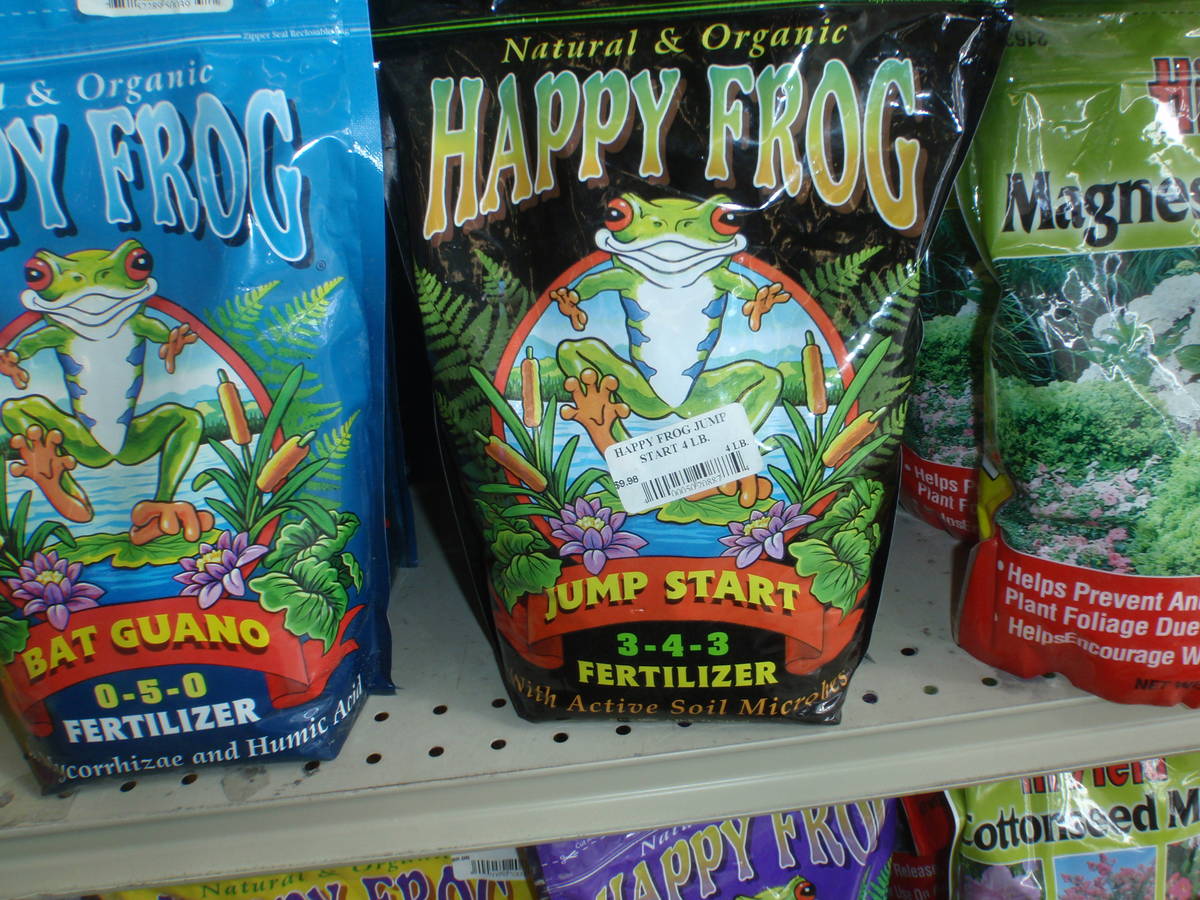Fertilizer application depends on growth of plant
The months of January and February are the time to apply fertilizer to landscapes. When precisely this application is made depends on the growth of the plant.
When plants like roses grow early or never stop growing through the winter, then this first application is done sometime in mid-January at the first signs of new growth. Other plants that start growing in the spring are fertilized later.
Why is there a difference in timing when applying fertilizers? Primarily because of the applied nitrogen. High amounts of readily available nitrogen nutrients in the soil after an application are a two-edged sword: They flush easily from the soil if plant roots aren’t ready for them. Some types of nitrogen escape into the air too.
But nitrogen nutrients should be available to push new growth. Irrigations when fertilizer is plentiful but plants aren’t ready to receive it result in waste. This nitrogen is just washed away. Basically, correctly timing a fertilizer application saves money.
The plant doesn’t care if the nutrients its roots find are organic or not, but the soil does. Organic fertilizers are the best choice if the soil is poorly amended.
Soil for growing vegetables that already has a rich 8 to 10 percent organic content (e.g., compost) won’t benefit much from organic fertilizers. But soils low in organic content will benefit from organic fertilizers.
In some cases, organic fertilizers are the right choice to make. Other times, it’s not necessary.
Most organic fertilizers release their nutrients slowly. You must pay big money for mineral fertilizers to do that. Mineral fertilizers that can do that are called slow-release fertilizers and are more expensive to manufacture and thus more costly for the consumer.
The first couple of months of the year are the time for applying iron fertilizers to the soil. They can be mixed with a fertilizer application or applied separately. It doesn’t matter. Whatever is convenient.
Most iron fertilizers are sensitive to the alkalinity of the soil — its pH. The magic pH is about 7.6. Below this number, they all work; above it, they won’t work well.
Our raw Mojave Desert soils measure from about 7.8 to 8.2 in alkalinity. If you cover the soil with rock, I will guarantee the soil alkalinity will be a problem for many plants. Plants unaccustomed to these soils will need an iron fertilizer.
If you cover the soil with wood chips and keep it moist, then use any iron fertilizer you want. Using an iron chelate fertilizer that contains EDDHA (chelate) improves the chances that your iron fertilizer application will work.
Bottom line? Use compost when amending the soil. A rich compost also adds fertilizer. Cover the soil with wood chips rather than rock unless you are sure the plants you are growing can handle it. When applying an iron fertilizer, use any iron product you want if the soil has been amended.
Q: I have Aleppo, chir and black pine. When should I fertilize them?
A: All of the pines, if they need a fertilizer application, should be treated sometime in mid- to late February. You will know if a fertilizer application is needed by the amount of new growth. Young trees should have lots of new growth. Older trees will have moderate amounts.
So, if they are young trees and you saw lots of new growth last year, it’s possible to delay a fertilizer application until next spring or possibly cut it in half. If you think the trees need a fertilizer application, then apply the full amount.
The amount of fertilizer to apply is oftentimes printed on the fertilizer bag. This amount represents the maximum to apply.
Frequently, if the tree is already showing signs of good growth, then half the amount recommended on the fertilizer bag is adequate. If the tree is in desperate need of a fertilizer application, then apply the full amount recommended by the bag.
Tree roots grow where water is applied. Applying a fertilizer outside of this area is a waste of money. Apply fertilizers where water is applied so that the fertilizer is carried to the roots when during an irrigation.
Q: When should I start applying fertilizer to my lawn?
A: Cool-season lawns, like the fescues, should have their first fertilizer application as it’s beginning to wake up in early spring. Usually, this is sometime in mid-February, but it might be earlier depending on the weather.
This is also the time when Weed and Feed fertilizers are first applied. A second application of a Weed and Feed fertilizer might be necessary four to six weeks later. Read the bag.
The best weed suppression for lawns is keeping it dense, regularly fertilizing it and mowing it at 2 inches or above by using a clean mower.
Warm-season lawns, such as hybrid Bermuda or paspalum, are fertilized about a month later and stopped earlier in the fall.
Fertilizers containing fungicides are applied when temperatures are starting to get hot in our climate, usually around late May or June. Fungicides might be applied separately from a fertilizer application if the weather is too hot for a fertilizer.
Cool-season lawns are fertilized a minimum of four times each season. Slow-release lawn fertilizers may be applied less often. Fertilizer applications should be frequent but not excessive or you will foster a fat and unhealthy lawn.
Another indicator a fertilizer application is needed is its color. Apply lawn fertilizers when its green color is starting to fade or diminish. The color change is gradual and subtle. Most lawn fertilizers are high in nitrogen and will darken the color of your lawn after an application.
The other fertilizer that helps with dark green color is iron. But the lawn must have a high nitrogen application at the same time it receives iron, or it won’t work. Combination fertilizers of nitrogen and iron for lawns is a good idea.
The best lawn fertilizers have their three nutrients in a ratio of 3:1:2 or 4:1:2. One example of such a fertilizer is 21-7-14, but there are many others as well.
Q: Can applying too much fertilizer cause problems given our extreme desert conditions here in Vegas? Is four times per year too much? Every other month? I am specifically interested in the effects on vines and pine trees.
A: All plants, whether they are woody or not, perform best with very small applications of fertilizer applied frequently. That’s also good during hot weather.
The trick is knowing when to start making the applications, when to stop making them, how much fertilizer to apply, what kind of fertilizer to apply, how often and differentiating these applications with a plant’s environment (location and soil primarily) in mind. When you start thinking like this, it separates serious gardeners from gardening out of necessity.
Now, getting back to your question. All your pine trees will grow great fertilized once a year in early spring. The chir pine is the most winter tender of the three in our area so it should not get a fertilizer application after July 1. The only time these trees perform better with more frequent applications is if they are growing on very sandy soils.
Are any of these vines tender to winter freezing temperatures? If they are, then stop fertilizing them around July 1. Are any of these vines appreciated for their flowers? Flowering vines should receive a different fertilizer, such as a rose-type fertilizer, from nonflowering vines.
Most trees and shrubs grow acceptably well receiving a single application of fertilizer in the spring, two applications at the very most. If the plants are winter tender (susceptible to freezing temperatures if below 25 degrees), then I would not make the second application after July 1. If these plants are not winter tender but can handle lower freezing temperatures, then a single application in the spring and the second application in the fall would be enough.
Bob Morris is a horticulture expert and professor emeritus of the University of Nevada, Las Vegas. Visit his blog at xtremehorticulture.blogspot.com. Send questions to Extremehort@aol.com.























